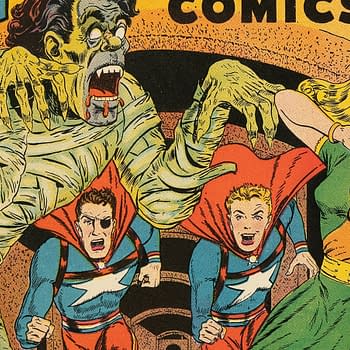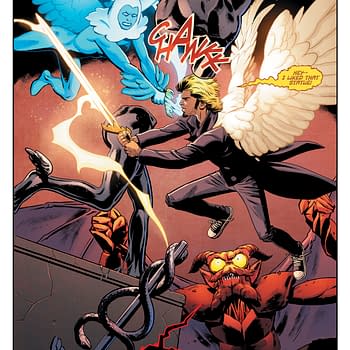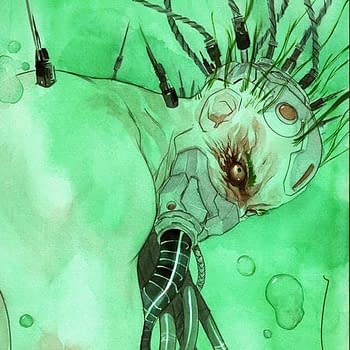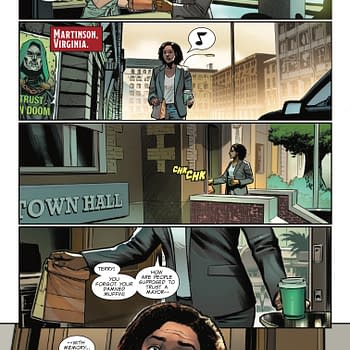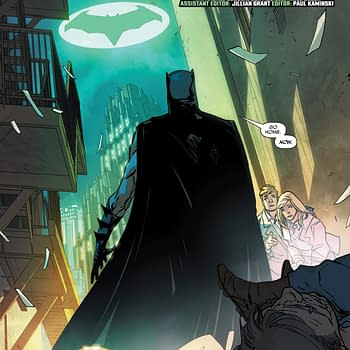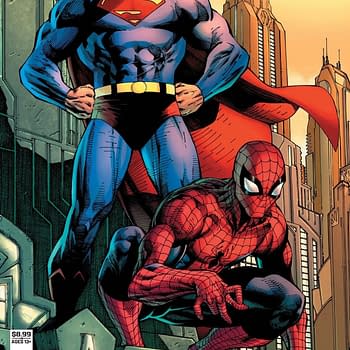Posted in: Comics, Vintage Paper | Tagged: spider-man, steve ditko
Steve Ditko's Advice to an Aspiring Comic Book Artist in 1973
Legendary comic book creator Steve Ditko became known for responding to letters that fans wrote to him through the better part of six decades. The man who created or co-created numerous important characters such as Spider-Man, Doctor Strange, Hawk and Dove, Shade the Changing Man, Mr. A, and many others answered fan mail and other correspondence he received from the 1960s through to nearly the end of his life in 2018. Ditko's correspondence has become so well-known among his fans that there's even a Facebook group, Steve Ditko Letters, dedicated to sharing and discussing these letters.

Writing up a bit of news about the highlights of the "Spider-Steve Collection", an amazing assemblage of Spider-Man-related items put together by the late Steve Levine and being auctioned by Heritage Auctions on behalf of his family, one of the items listed particularly caught my eye. It's a 1973 letter from Ditko responding to an aspiring artist seeking an apprenticeship with Ditko. The letter reads:
Dear Ken,
I'm sorry but I can't take on any apprenticeship.
There's plenty of good art books around to study. Work on what you consider your weak points.
What makes them weak – wrong.
What is the right way to do them.
What makes them right.Take any one panel you did. Draw it from as many angles or view points as you can. Long shot, close up — different types of setting props.
But also the one story idea. To see what could be done in composition and story telling.
Take any figure or figures you've done. See what you like, don't like. Keep redrawing that one figure or group until you are satisfied you know what the errors were and why.
If a hand you draw is bad, redraw that hand and position over — studying each drawing to eliminate the errors.
And work from basic shapes — detail is the last thing to worry about.
Regards,
Steve
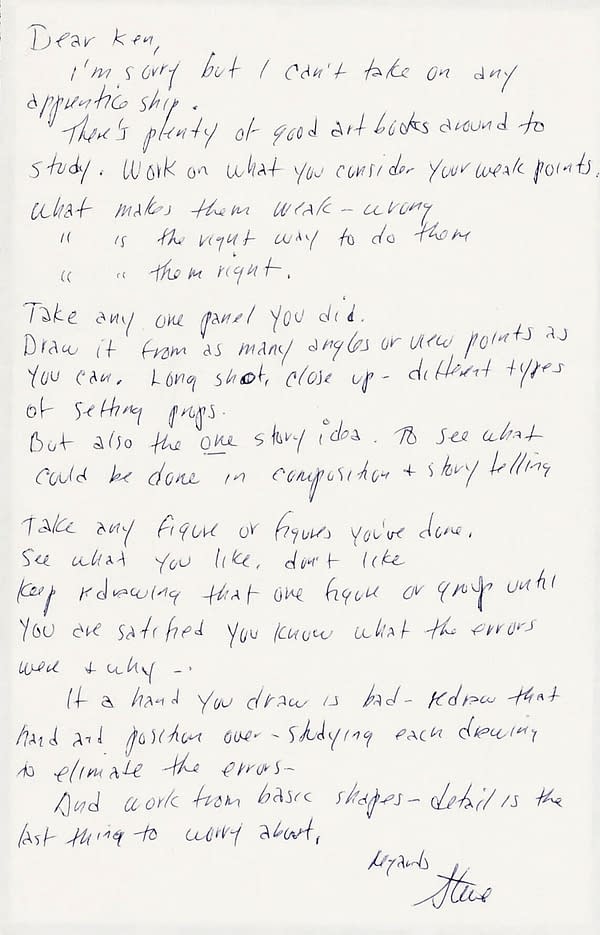
Ditko's correspondent, aspiring artist Ken Landgraf seems to have taken this advice to heart. Landgraf was a serious comic book fan and a Ditko fan in particular. As a 14-year-old comic book reader, he wrote a letter that appeared in Amazing Spider-man #11 (1964) expressing his fascination with Ditko's artistic style. He may also be the recipient of this 1964 Ditko letter of advice for an aspiring comic book artist. And by the age of 16, he was able to get Ditko to draw a Spider-Man cover for the launch of his 1966 fanzine, The Crimestopper Monthly (see also this excellent post on Ditko's fanzine artwork).
As Landgraf said in 2012:
When I was a kid, I purchased a ditto machine, a Spirit Duplicator, and started printing my own comics like Crimestopper Monthly and Vampire Kiss— sold them through Rocket's Blast, a fanzine. Steve Ditko, the Spider Man artist, even drew a cover for me. I had two fan letters published in SpiderMan #11 and Adventure Comics. I'd write letters to artists. Ditko and [Joe] Kubert wrote back to encourage me.
I went up to Marvel around lunchtime and spotted Stan Lee coming out of Marvel's building. I introduced myself and told him I just got out of the service and asked if I could show him my portfolio. He said he was going to lunch but that I could go up to Marvel and say that Stan said I could show my work to John Romita, the art director. I was able to go in right away to see him.
Although Steve Ditko couldn't offer Landgraf an apprenticeship in 1973, it strikes me that his advice about persevering until you get it right was well suited to this young artist. Landgraf would eventually study with Will Eisner and Harvey Kurtzman, and become an assistant to the likes of Gil Kane and Rich Buckler. Within a few years after this 1973 letter, Landgraf had broken in at DC Comics on titles such as The Witching Hour, Ghosts, The Unexpected, World's Finest, and others. He also became a small publisher of note, launching titles Rock Comics and Starfighters in 1979. Landgraf would also work with Ditko's 1958-1968 studio-mate Eric Stanton.
The young man so eager to learn how to be a comic book artist would eventually come to teach others the craft. By the 1980s, Ken was teaching a weekly comic book art workshop out of his studio in Manhattan. It's hard not to appreciate the fact that this letter passed from one very dedicated Ditko and Spider-Man fan in Landgraf to another in Steve "Spider-Steve" Levine. And perhaps soon, the next caretaker of this little corner of comic book history will keep the memory alive as well.








